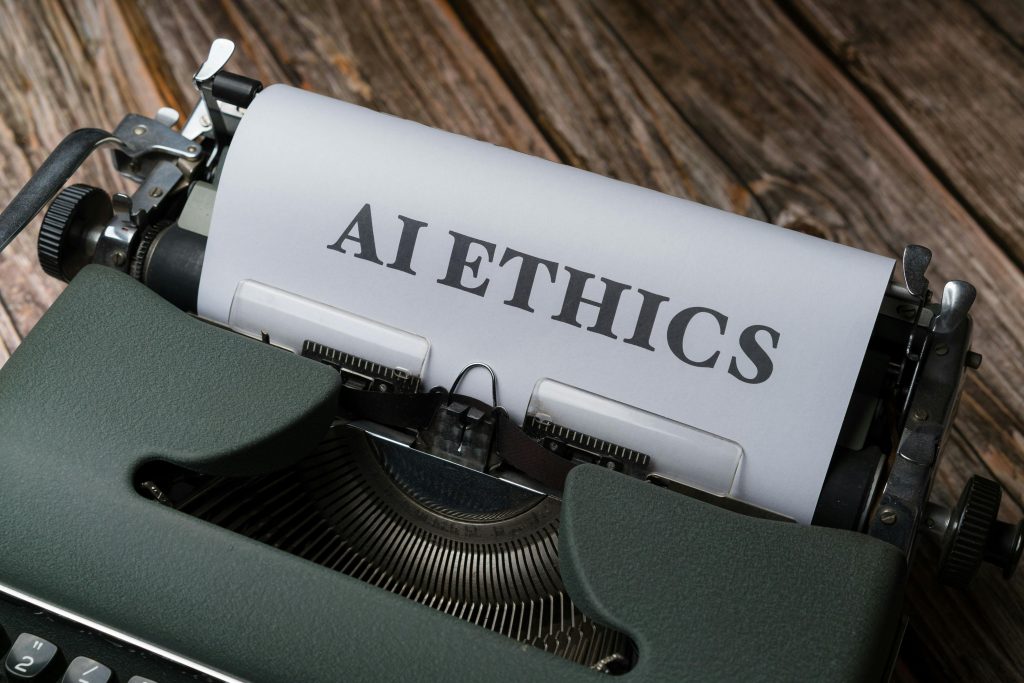Introduction
Artificial intelligence (AI) is reshaping industries—from healthcare diagnostics to autonomous vehicles and personalized marketing. However, as AI systems increasingly make consequential decisions, developers and organizations face unprecedented ethical dilemmas. Responsible AI isn’t just a buzzword; it’s a commitment to designing, deploying, and maintaining AI in ways that respect human rights, fairness, and societal well-being. In this post, we’ll explore the key ethical frameworks—both classic philosophical traditions and AI-specific guidelines—that inform responsible AI development. Whether you’re an AI engineer, product manager, or policymaker, understanding these frameworks helps you build systems that earn trust, mitigate harm, and align with global standards.

Understanding Responsible AI
What Is Responsible AI?
Responsible AI refers to the practice of building and deploying artificial intelligence systems that are:
- Fair and Non-Discriminatory: Algorithms do not perpetuate or exacerbate biases against individuals or groups.
- Transparent and Explainable: Decision-making processes are understandable to users, auditors, and stakeholders.
- Secure and Private: Data is collected, stored, and processed with strong protections for individuals’ privacy and security.
- Accountable and Governable: Organizations have clear policies and oversight mechanisms to audit, rectify, and take responsibility for AI outcomes.
Achieving these goals requires mapping high-level values—like justice, autonomy, and beneficence—onto concrete technical and organizational practices. Ethical frameworks offer structured guidance to navigate complex trade-offs (e.g., accuracy vs. interpretability, innovation speed vs. safety) throughout the AI lifecycle.
Major Philosophical Traditions Informing AI Ethics
1. Deontological (Duty-Based) Ethics
Core Idea: Actions are judged by adherence to moral duties and rules rather than their consequences.
- Immanuel Kant’s Categorical Imperative: Treat individuals as ends in themselves, never merely as means to an end.
- Application to AI:
- Respect for Autonomy: AI should not manipulate users or undermine their capacity to make informed choices (e.g., dark patterns in recommendation engines violate autonomy).
- Rights-Based Constraints: Systems must safeguard fundamental human rights—privacy, freedom of expression—regardless of potential utility gains.
Example:
An AI hiring tool should not scrape candidates’ social media without explicit consent. Even if more data might improve predictions, doing so breaches individuals’ right to privacy and dignity.
2. Consequentialist (Utilitarian) Ethics
Core Idea: Actions are judged by their overall outcomes or “the greatest good for the greatest number.”
- Jeremy Bentham and John Stuart Mill: Focus on maximizing aggregate well-being or utility.
- Application to AI:
- Cost-Benefit Analysis: Stakeholders evaluate potential risks (e.g., job displacement, biased lending decisions) against benefits (e.g., efficiency gains, improved healthcare outcomes).
- Risk Mitigation: If an AI system’s expected positive impact outweighs potential harms—and those harms can be mitigated or compensated—deployment may be ethically justifiable.
Example:
Deploying a diagnostic AI that catches rare cancers early can save lives. A utilitarian approach would support development, provided rigorous validation and oversight minimize false positives/negatives.
3. Virtue Ethics
Core Idea: Focuses on the moral character and virtues of the actors rather than rules or consequences.

- Aristotle’s Golden Mean: Ethical behavior emerges from practicing virtues—honesty, courage, compassion—in moderation.
- Application to AI:
- Cultivating Ethical Engineers: Organizations encourage developers to internalize values like integrity, empathy, and humility when designing and testing AI.
- Responsible Organizational Culture: Beyond code, building a corporate climate where employees speak up about questionable practices fosters moral character.
Example:
A team developing facial recognition might practice “ethical humility” by proactively engaging with civil rights groups, even before regulatory mandates, to ensure balanced design choices.
AI-Specific Ethical Frameworks and Guidelines
1. The IEEE Ethically Aligned Design (EAD)
Overview: Developed by the Institute of Electrical and Electronics Engineers (IEEE), EAD provides an expansive set of principles and recommendations for ethical AI and autonomous systems.
- Core Principles (Summary):
- Human Rights: Respect and protect fundamental rights (e.g., freedom, privacy, non-discrimination).
- Well-Being: Promote safety, health, and the sustainable use of resources.
- Data Agency: Ensure individuals control how their data is collected and used.
- Transparency: Provide clear, accessible explanations for AI decisions.
- Accountability: Establish governance structures to audit and remediate AI harm.
- Awareness of Unintended Bias: Continuously assess and mitigate data or algorithmic biases.
- Implementing EAD:
- Conduct ethical impact assessments during design sprints.
- Integrate fairness toolkits (e.g., IBM AI Fairness 360) to detect discrimination.
- Use tools like AI explainability toolkits (e.g., LIME, SHAP) to make model behavior interpretable.
2. OECD Principles on AI
Overview: The Organisation for Economic Co-operation and Development (OECD) created a non-binding, intergovernmental framework endorsed by over 40 countries.
- Five Key Principles:
- Inclusive Growth, Sustainable Development, and Well-Being: AI should benefit all humans and ecosystem health.
- Human-Centred Values and Fairness: Respect human rights, diversity, and ensure fairness across stakeholders.
- Transparency and Explainability: AI systems should be transparent and allow for audit and accountability.
- Robustness, Security, and Safety: Design systems that function reliably and safely under expected and unexpected conditions.
- Accountability: Entities should be held responsible for AI system outcomes.
- Application in Practice:
- National governments referencing OECD Principles when crafting AI policies (e.g., Germany’s AI Strategy, Canada’s Directive on Automated Decision-Making).
- Corporations embedding OECD guidelines into procurement checklists for third-party AI tools.
3. European Union AI Act and Ethical Guidelines
Overview: The EU’s evolving regulatory landscape includes:
- Ethics Guidelines for Trustworthy AI (2019): Developed by the High-Level Expert Group on AI.
- Proposed AI Act (2021): A risk-based regulatory framework that classifies AI applications into unacceptable, high, and minimal risk.
- Seven Key Requirements for Trustworthy AI (Ethics Guidelines):
- Human Agency and Oversight: Safeguard human decision-making—AI must not undermine human autonomy.
- Technical Robustness and Safety: Develop systems resilient to errors, attacks, and misuse.
- Privacy and Data Governance: Ensure lawful, fair, and transparent data handling.
- Transparency: Enable traceability and explainability of AI processes.
- Diversity, Non-Discrimination, and Fairness: Prevent discriminatory outcomes.
- Environmental and Societal Well-Being: Factor in environmental impact and public good.
- Accountability: Implement mechanisms for audit, certification, and redress.
- AI Act Risk Categories:
- Unacceptable Risk: Systems banned or severely restricted (e.g., social scoring by governments).
- High Risk: Stringent requirements (data quality, documentation, human oversight). Examples: biometric identification, critical infrastructure.
- Minimal Risk: Voluntary codes of conduct (e.g., chatbots, spam filters).
4. UNESCO’s Recommendation on the Ethics of AI
Overview: Adopted by UNESCO member states in 2021, this recommendation focuses on AI’s societal impact and human rights.

- Ten Core Values:
- Universal Human Rights
- Beneficence (Well-Being)
- Non-Maleficence (Do No Harm)
- Dignity and Autonomy
- Privacy and Data Protection
- Solidarity, Fairness, and the Common Good
- Diversity and Pluralism
- Social Responsibility and Accountability
- Sustainability
- Shared Benefit
- Implementation Mechanisms:
- Member states develop national AI strategies rooted in these values.
- Ethics review boards and multidisciplinary committees to evaluate AI projects.
- Public dialogues and consultations to incorporate diverse perspectives (global South, Indigenous communities).
Integrating Ethical Frameworks into the AI Lifecycle
1. Design & Data Collection
- Privacy-by-Design:
- Apply techniques like differential privacy, data anonymization, and secure multiparty computation.
- Principle: Collect only what you need; obtain explicit consent when possible.
- Bias Mitigation from Inception:
- Conduct Data Sheets for Datasets (geared toward transparency about dataset composition and collection methodology).
- Use fairness auditing frameworks (e.g., Google’s Model Cards) to clearly document intended use, limitations, and performance across demographic groups.
2. Model Development & Validation
- Explainability and Transparency:
- Incorporate explainable AI methods—LIME (Local Interpretable Model-Agnostic Explanations), SHAP (SHapley Additive exPlanations)—to offer insights into why a model made a certain prediction.
- Document model architecture, hyperparameter choices, and validation results in an accessible manner (e.g., “Model Fact Sheets”).
- Robustness & Safety Testing:
- Perform adversarial robustness evaluations (e.g., FGSM, DeepFool) to ensure systems aren’t easily manipulated.
- Simulate edge-case scenarios (e.g., adversarial inputs, sensor failures in autonomous vehicles) and measure performance degradation.
- Stakeholder Review:
- Involve ethicists, domain experts, and potentially affected users in reviewing models.
- Hold design sprints where ethical “red teams” challenge assumptions and identify overlooked harms.
3. Deployment & Monitoring

- Continuous Auditing:
- Establish Key Performance Indicators (KPIs) for fairness, accuracy, privacy compliance, and security incidents.
- Use monitoring dashboards (e.g., AI observability platforms) to track model drift, performance drops, or emerging biases post-deployment.
- Human-in-the-Loop (HITL) Mechanisms:
- For critical decisions (loan approvals, medical diagnoses), require human review of AI recommendations.
- Implement escalation processes—if confidence scores drop below a threshold, route cases to human experts.
- Incident Response & Governance:
- Define a clear governance policy: Who gets notified if an AI system causes harm? What steps should be taken to remediate?
- Conduct post-mortems when failures occur (e.g., discriminatory ad targeting) and publicly share lessons learned.
4. Decommissioning and End-of-Life Considerations
- Data Retention Policies:
- Purge or archive training data once models are retired, adhering to privacy regulations (e.g., GDPR’s “right to be forgotten”).
- Maintain metadata records documenting why and when a model was decommissioned.
- Transition Plans:
- If replacing one AI system with another (e.g., upgrading a speech-recognition engine), ensure backward compatibility or staged rollouts to avoid service disruptions.
- Inform affected stakeholders—employees, customers, regulators—about changes and any new data practices.
Conclusion
Responsible AI development demands more than technical prowess; it requires grounding in ethical principles that span philosophical traditions and sector-specific guidelines. Deontological ethics remind us to uphold non‐negotiable rights, utilitarian ethics urge us to weigh benefits against harms, and virtue ethics encourage us to cultivate moral character. Building on these foundations, frameworks from IEEE, OECD, the EU, and UNESCO translate abstract values into actionable requirements: transparency, fairness, privacy, robustness, and accountability. By integrating these ethical guardrails throughout the AI lifecycle—from design and data collection to deployment and decommissioning—organizations can foster trust, mitigate unintended harm, and contribute positively to society. As AI continues to evolve, continued dialogue, interdisciplinary collaboration, and iterative governance will be essential to ensure that technology serves humanity rather than undermines it.


